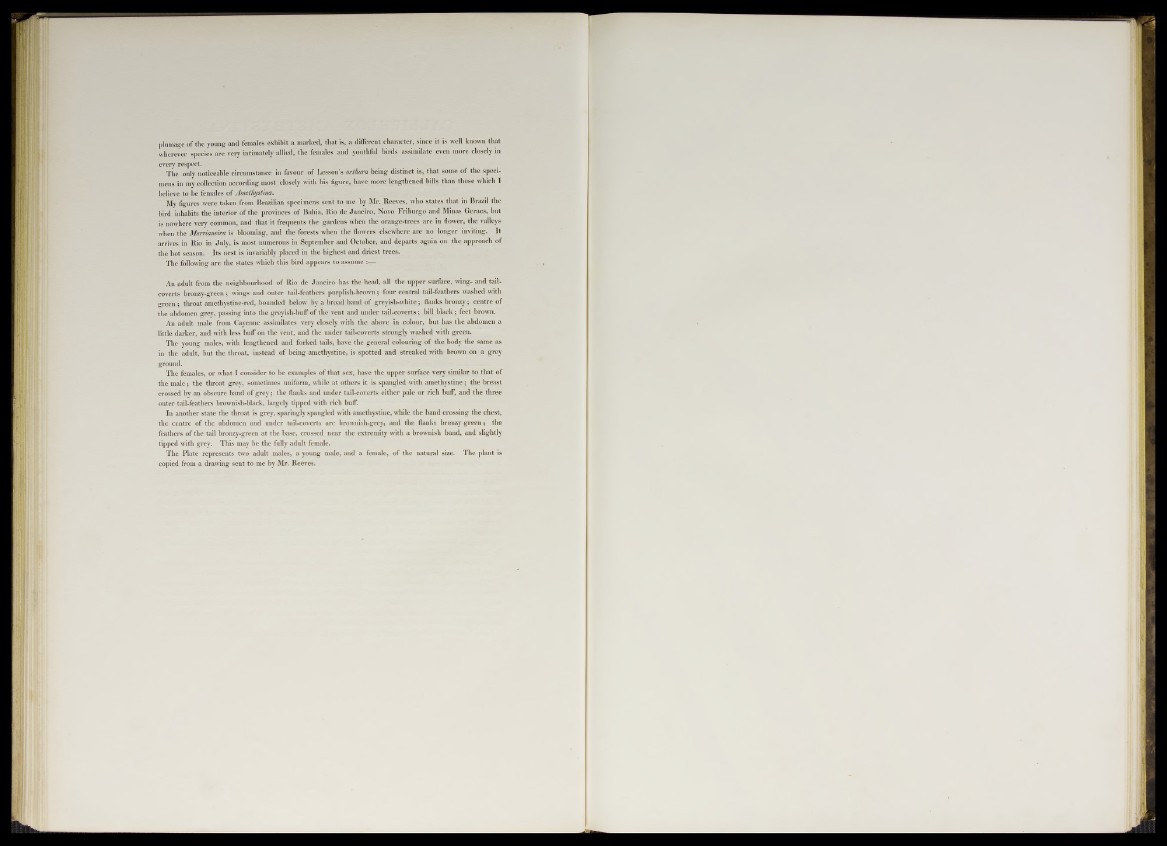
plumage of the young and females exhibit a marked, that is, a different character, since it is well known that
wherever species are very intimately allied, the females and youthful birds assimilate even more closely in
every respect.
The only noticeable circumstance in favour of Lesson’s orthura being distinct is, that some of the specimens
in my collection according most closely with his figure, have more lengthened bills than those which I
believe to be females of Amethystina.
My figures were taken from Brazilian specimens sent to me by Mr. Reeves, who states that in Brazil the
bird inhabits the interior of the provinces of Bahia, Rio de Janeiro, Novo Friburgo and Minas Geraes, but
is nowhere very common, and that it frequents the gardens when the orange-trees are in flower, the valleys
when the Marrianeira is blooming, and the forests when the flowers elsewhere are no longer inviting. It
arrives in Rio in July, is most numerous in September and October, and departs again on the approach of
the hot season. Its nest is invariably placed in the highest and driest trees.
The following are the states which this bird appears to assume :—
An adult from the neighbourhood of Rio de Janeiro has the head, all the upper surface, wing- and tail-
coverts bronzy-green ; wings and outer tail-feathers purplish-brown; four central tail-feathers washed with
green ; throat amethystine-red, bounded below by a broad band of greyish-white; flanks bronzy; centre of
the abdomen grey, passing into the greyish-buff of the vent and under tail-coverts; bill black; feet brown.
An adult male from Cayenne assimilates very closely with the above in colour, but has the abdomen a
little darker, and with less buff on the vent, and the under tail-coverts strongly washed with green.
The young males, with lengthened and forked tails, have the general colouring of the body the same as
in the adult, but the throat, instead of being amethystine, is spotted and streaked with brown on a grey
ground.
The females, or what I consider to be examples of that sex, have the upper surface very similar to that of
the male; the throat grey, sometimes uniform, while at others it is spangled with amethystine; the breast
crossed by an obscure band of grey; the flanks and under tail-coverts either pale or rich buff, and the three
outer tail-feathers brownish-black, largely tipped with rich buff.
In another state the throat is grey, sparingly spangled with amethystine, while the band crossing the chest,
the centre of the abdomen and under tail-coverts are brownish-grey, and the flanks bronzy-green; the
feathers of the tail bronzy-green at the base, crossed near the extremity with a brownish band, and slightly
tipped with grey. This may be the fully adult female.
The Plate represents two adult males, a young male, and a female, of the natural size. The plant is
copied from a drawing sent to me by Mr. Reeves.